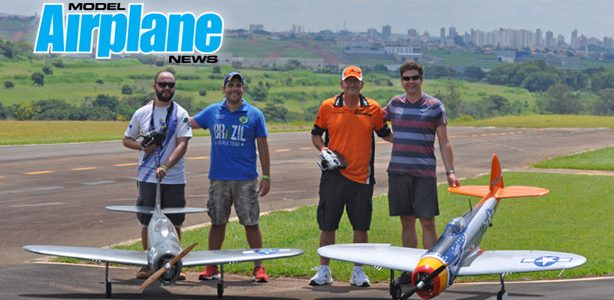Hi, I have a new O.S. Surpass FS 120S III and the engine looks good in low idle but when I go to the air the engine become lean and the max revolutions are to low. I tried any needle adjustment but the engine don’t have enough power.
Regards,
Carlos V., Venezuela
Dear Sr. V.,
With the limited information you gave me it would be pretty hard to say why your engine is going lean. What size prop are you using, what kind of fuel, is the engine cowled, etc. With a 14 x 8 you should be seeing about 9,700 rpm on the ground. If you are using a larger prop yoU may just be lugging the engine down below it’s torque peak, although the O.S. fS 120 Surpass III should be able to handle larger prop sizes. Possibly you are using too small a fuel line, so use large size fuel line, not medium. Be sure your fuel tank is mounted in foam rubber as you may be experiencing fuel foaming although this usually causes an engine to surge. Also be sure your fuel tank is venting and the vent line not blocked. Other than this, I do not know what else to offer.
Yours,
Clarence Lee
I am using :
Prop: APC 14X8 I have 6,500 rpm on the ground.
Fuel: Power Master Airplane 15%
Fuel Line: Prather medium size.
Tank mounted in Foam with Sullivan screen filter
I try with the cowl installed and without cowl with the same problem. The engine in low rev. has a lot of smoke and at full throttle you don´t see any smoke in the air.
Dear Sr. V.,
Are you sure your carburetor is opening fully? 6,500 rpm with a 14 x 8 APC prop would indicate a very sick engine. As I told you previously, you should be seeing at least 9,500. If your carburetor is opening fully, then the engine is not receiving sufficient fuel. If you are using a sintered bronze filter in your fuel tank, drill a hole through the center. Remove the Sullivan fuel filter from the system. If none of these things help, then check the cam timing. There is a punch mark on the side of the cam gear. With the piston at top center, this mark should line up with the pushrod tube, i.e., not straight up.
Clarence Lee
























This is a related question on adjusting the needle valve on a 2-cycle engine using head and backplate temperature as the guiding criteria.
I am running a TT Redline 53H engine with 30% fuel in my helicopter, and use a small infrared thermometer to check the backplate and head temps after landing. For engine break-in I keep the head temp at 150 – 175, and then 175 – 200 for normal operation.
If I use an on-board telemetry system to determine head temp, should I change those numbers?
So far this technique seems to have worked well for me, but I would appreciate your comments and suggestions.